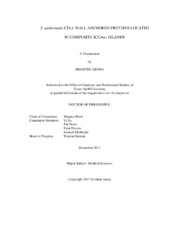| dc.description.abstract | Pathogenic bacteria improve their fitness, pathogenicity and virulence by acquisition of mobile genetic elements (MGE). These MGE carry genes for antibiotic resistance, toxins, virulence factors, etc. Staphylococcus epidermidis is a leading cause of nosocomial infections in patients with a compromised immune system and an implanted medical device. It has an open pan-genome with 20% variable genes. In my studies of S. epidermidis clinical isolates, I have discovered two genes that code for surface proteins, S. epidermidis surface protein J (SesJ) and Plasmin sensitive protein (Pls). These genes are present in a Staphylococcal Cassette Chromosome containing methicillin resistance gene (SCCmec). Further analysis has shown that SesJ contains structural features characteristic of Microbial surface components recognizing adhesive matrix molecules (MSCRAMMs), known major virulence factors of Gram-positive pathogenic bacteria. SesJ also contains a N-terminal repeat (NTR) region that has not been previously observed in MSCRAMMs. SesJ structural homologs were identified in three other coagulase negative staphylococci composing a new MSCRAMM NTR-containing subfamily.
171 clinical isolates were retrospectively collected from MD Anderson, Houston, and examined for the presence and location of the sesJ and the pls genes. Work presented in this dissertation show that the sesJ gene is prevalent in ST2, ST5 and ST 210 isolates, while the pls gene is present only in ST2. ST2 and ST5 isolates accounted for over 50% of the total isolates. Genetic location identification showed that sesJ is present in SCCmec Type IV and SCCmec Type VII. Different isoforms of SesJ were also observed in CC2 and CC5 isolates. Pls has been previously reported in S. aureus, where it is present in the SCCmec Type I. However in this study, the pls gene was discovered in S. epidermidis SCCmec Type IV. Additionally, the frequency of the sesJ gene has increased three folds in past three years. In summary, I discovered two novel surface proteins present in SCCmec. In the future, we will corroborate the presence of these genes with clinical outcome in patients and determine the role of SesJ in the S. epidermidis pathogenicity. | en |


